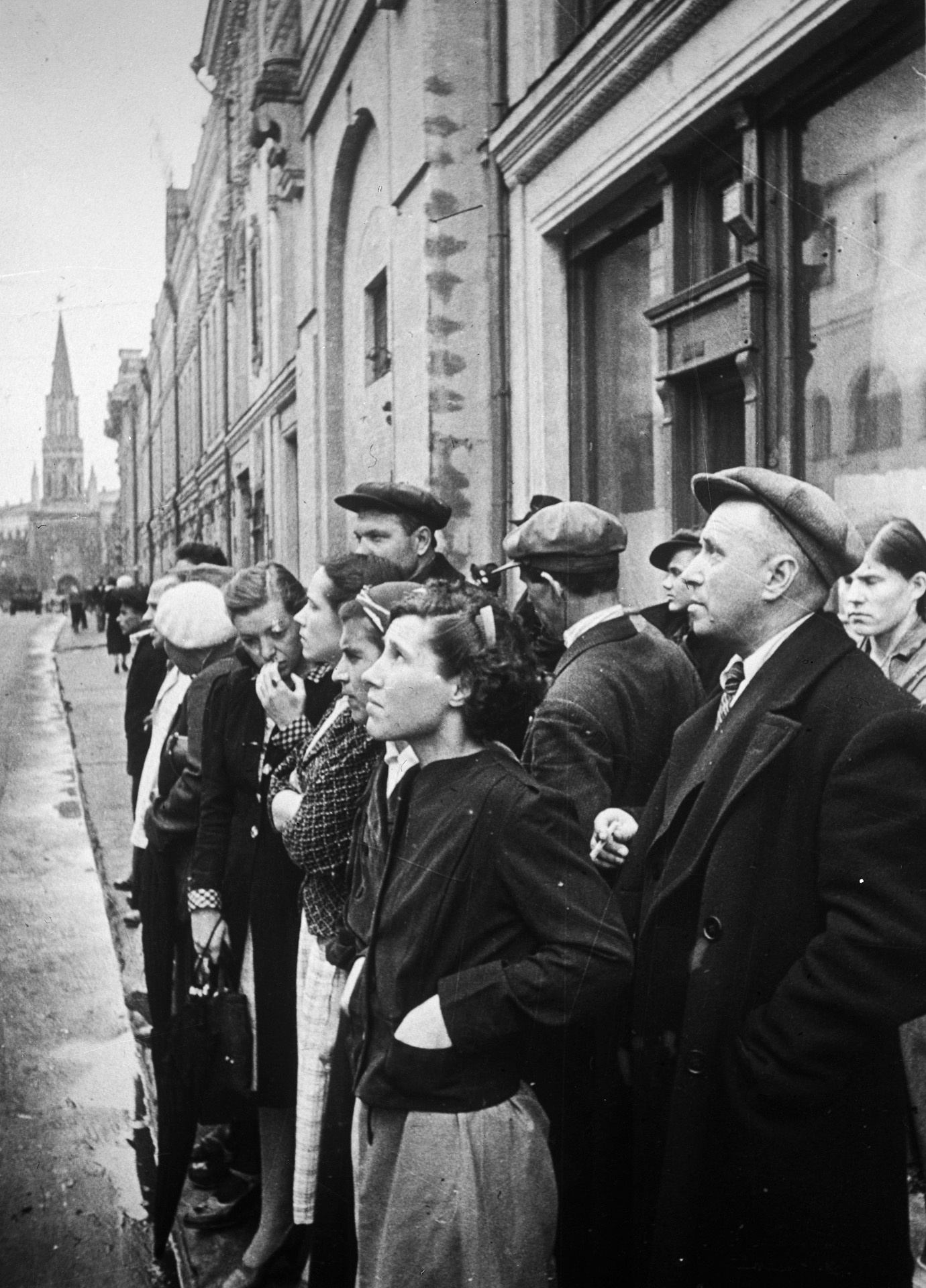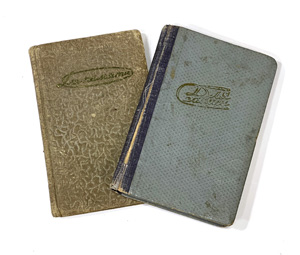«The first day of the Great Patriotic War»
1941
Early in the morning of 22nd June 1941, in the centre of Moscow, on Stanislavsky Street (now Leontievsky Lane), passersby noticed unusual hustle and bustle for a Sunday morning At the bottom of Stanislavsky Street was the TASS building, and at number 10 was the German Embassy. The German mission staff seemed to be engaged in something resembling a move, but no one paid much attention to it, although many found it strange.
On that memorable Sunday, Yevgeny Khaldei returned to Moscow from a business trip to Tarkhany, where, on assignment for the TASS editorial office, he covered events dedicated to the 100th anniversary of the death of Mikhail Lermontov, the great Russian poet. Without even having time to rest, Khaldei was urgently summoned to the TASS editorial office on Stanislavsky Street. On the way, he heard the beginning of an emergency radio broadcast by People’s Commissar for Foreign Affairs, Vyacheslav Molotov, who announced to citizens the invasion of the Soviet Union by Nazi Germany.
Without waiting for the end of the speech, Khaldei, with a loaded camera in hand, ran out into the street. Not far from the Kremlin, on 25 October Street (now Nikolskaya Street), he saw a group of people who, with their heads raised, were listening to the sound of the loudspeaker hanging on the opposite side of the street and were trying to comprehend Molotov’s words. Their faces showed confusion, fear, and dismay. It was this moment which Khaldei captured that would later become a legendary photograph, his first of that terrible war.
Molotov’s speech lasted only 8 minutes and 40 seconds, but the people did not disperse. They stood silently, each absorbed in their own thoughts. Khaldei recalled that at that moment, after taking his aforementioned shot, he thought about how surely there would be a last, victorious photograph as well. But at the time, he could hardly have foreseen that it would be him who would take that photograph.
In the foreground of the picture are Anna Trushina, who worked as a driver on the front line during the war, and Oleg Bobyrev, who served as an anti-aircraft gunner. In the 1980s, Khaldei managed to track them down and photographed them again in the same place.
Following this photograph on Stanislavsky Street, in 1941 Khaldei was sent to the Northern Fleet as a photojournalist. The editor gave him only 100 metres of film, which amounted to about 400 shots. When asked why so little, the editor replied that no more would be needed – the war would be over in a few weeks, a month at most. In those days, every Soviet citizen believed that any enemy of the Soviet Red Army would be defeated swiftly. However, reality turned out differently – there were more than a thousand days of war left until the victory photograph, Khaldei’s iconic ‘The raising of the flag over the Reichstag’, and during that time, Khaldei took more than 6,000 photographs, becoming the most accomplished photo chronicler of the Great Patriotic War.



